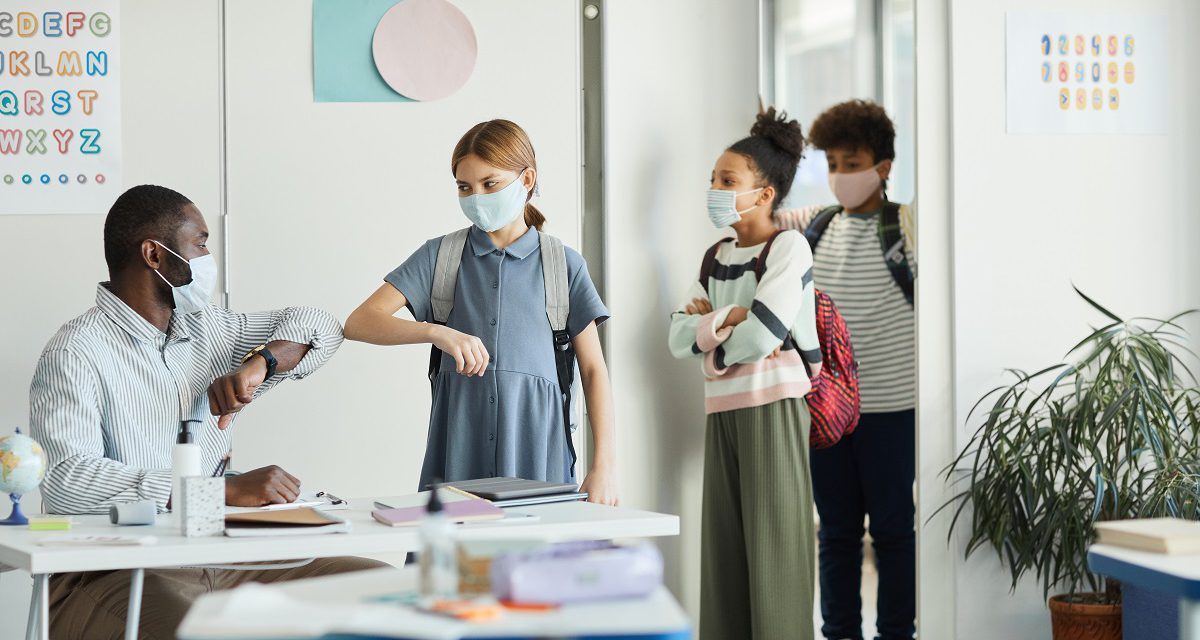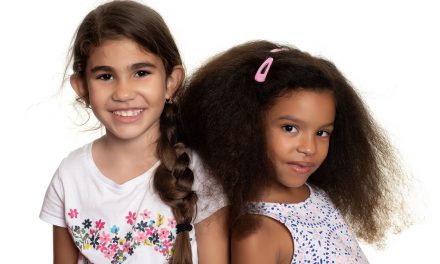On August 25th, many Missouri students will head back into the classroom for the start of the 2021-2022 school year. The preparation for the beginning of another academic year is usually brimming with excitement and hope as students, parents and educators are filled with positive expectations of what the new chapter will bring for student learning. But with the COVID-19 pandemic continuing to have a strong hold across the country, coupled with the addition of the quickly spreading Delta variant, the approach to this new school year is filled with additional layers of caution and concern when it comes to academic progress and safety.
While virtual learning has been used by many schools throughout the pandemic, the priority nationwide, especially after the roll out of the COVID vaccine, is to get students back into the classrooms for in-person learning. Dr. Sonja O’Leary, chair of the American Academy of Pediatrics (AAP) Council on School Health said, “We need to prioritize getting children back into schools alongside their friends and their teachers – and we all play a role in making sure this happens safely.” She also added that “combining layers of protection that include vaccinations, masking, and clean-hands hygiene will make in-person learning safe and possible for everyone.”
Without a vaccine for children under the age of 12, wearing a mask is vital to keeping children safe from contracting the virus. Recently, the AAP recommended that schools mandate all students over the age of 2 to wear masks in the classroom regardless of their vaccination status. The overall goal is to make sure that schools provide the optimal safety conditions for everyone in the school building.
According to Our World in Data, only 2.47 million Missouri residents are fully vaccinated, which is 40.3% of the total population. With Missouri’s low vaccination rate, the challenges of keeping students safe in the classroom, even with masks and hygiene protocol, are greater than areas with high vaccination rates. Besides that, the Delta variant is highly infectious, landing younger victims into hospitals and intensive care units.
Recently, Kansas City physicians wrote a letter urging administrators and board members to focus on in-person learning, make mask wearing mandatory for all students ineligible for a vaccination, encourage mask wearing for all unvaccinated students in the 7th through 12th grade, and implement strong contact tracing. Dr. Melissa Gener, a co-author of the letter, felt that “as a mom and as a physician in the community that our voice just wasn’t being heard.”
How are Teachers Preparing for the School Year?
Summer preparations for educators and administrators usually include organizing and decorating classrooms, mapping out the curriculum and special projects for the year, and attending professional development and conferences to enhance student learning. But this year, they also need to create systems that would ensure an easier transition for their students if the need to transfer back to virtual learning happens again. With the speed at which the Delta variant is spreading, currently making up more than 80% of all sequenced cases, many educators are concerned, but better prepared this round, if the switch were to occur. Even in-person classroom experiences favor the use of more technology and systems such as Google Classroom for student work to reduce the need to share materials or paper between students and teachers.
Teachers are aware that the emotional needs for their students will be greater this school year than in years past. Many are concerned about their students’ well-being and the emotional trauma they were experiencing since the beginning of the pandemic. Some students had several family members impacted by the virus or lost someone they loved. They are worried about the health of family and friends and afraid of contracting the virus themselves. These issues are often addressed in classrooms with trusted teachers and peers. Dealing with the psychological impact that the pandemic has had on students remains a concern for educators, as a child’s emotional state directly impacts their continued emotional development and how they perform in the classroom.
Academic Pressures
Educators must also manage the heightened expectations of their students’ academic performance. Many parents expressed concern about a decline in academic progress during the pandemic. These deficits were the result of many factors, including the switch from in-person learning to virtual learning, a platform that many students found difficult to navigate. There are severe limitations to what can be taught or experienced through virtual learning, and many students in rural and underserved areas had little to no access to adequate internet. This made it impossible for some students to even participate virtually, on a consistent basis or at all, widening the learning gap of many students in underserved areas.
Teachers are accustomed to having different types of learners who are developing at various rates in one classroom. However, the gaps that are going to be present in so many of their students this fall will especially complicate getting a baseline for learning in the classroom. Patience and flexibility from parents will be paramount as teachers map out the steps needed to ensure a productive school year for all students.
Parents, Here’s How You Can Help
With mask mandates being a strong possibility for every school hosting in-person learning in the fall, it is important to prepare students for the expectations that will be present in their classroom. Here are a few considerations for reintroducing masking:
- Have your child wear the mask at home or in public for a few hours each day. This way, they can get accustomed to wearing the mask again if they haven’t worn one consistently during the summer.
- Allow students to be a part of the process in deciding the mask that they are most comfortable with, as they will be wearing it for a large portion of their school day.
- Buy extra masks and make sure they always have a spare in their backpack.
Teachers need parent support more than ever before. They have always worn several hats in the classroom: educator, friend, mentor, therapist, and nurse. The safety of the children is always a priority, and student needs have been heightened during this pandemic. Now, teachers have the additional layer of maintaining not only a socially distanced, constantly disinfected classroom, but a hyper-awareness of their personal health.
In addition, teachers must manage expectations about academic progress, concerns about their students falling behind, and the information that they lost from a lack of traditional learning during the 2020-2021 school year. Teachers are tasked with assessing students, filling in any academic gaps and still making sure children advance this school year. While many students will be in the classrooms learning, these huge tasks that teachers will undertake require time, patience, and understanding from parents. This pandemic has essentially added several balls for teachers to juggle daily. They will not be able to manage these tasks throughout the school year without supportive administrators and parents.
It’s safe to say the COVID-19 pandemic has altered what schooling looks like inside and outside of the classroom. However, proactively centering safety in schools will allow for the necessary progress in student learning to happen.








